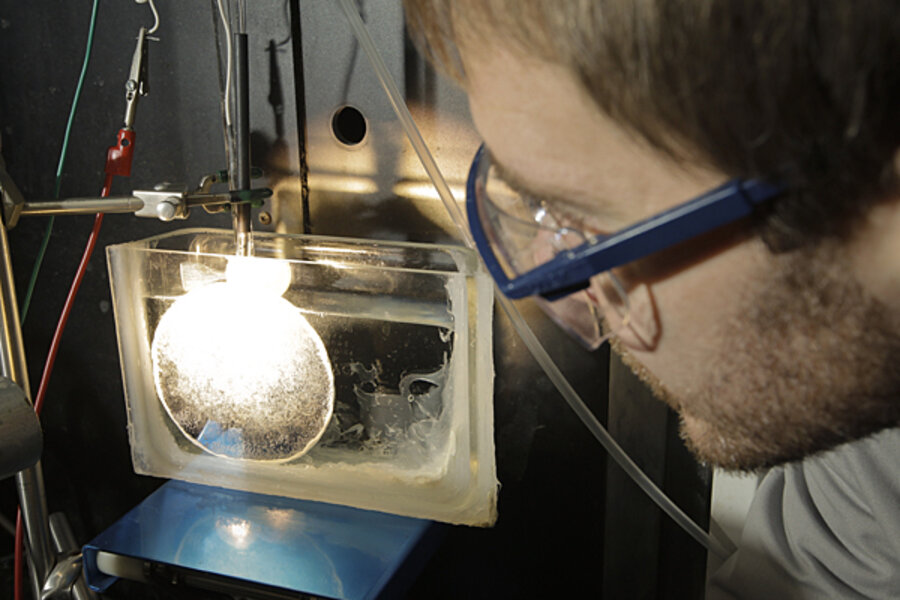Can we use 'reverse photosynthesis' to make biofuels?
Loading...
German scientists say they have discovered a way to significantly speed up the process of making fuel from biomass, which includes non-food plant material such as wood or grass.
Researchers have discovered that monooxygenases, enzymes already widely used to make bioplastics and biofuel — a clean-burning fuel, or ethanol, made from agricultural waste instead of petroleum — work significantly faster and more efficiently when exposed to sunlight. The enzymes break down biomass to release sugars from plant fibers which are then fermented into ethanol. But without sunlight, the process takes a long time.
"They've [the enzymes] been surprisingly slow," Claus Felby, a professor from University of Copenhagen, told The Christian Science Monitor in an interview.
"The reason is that we didn't provide them with the right condition, because they appear to be light driven," he says.
By using sunlight as a catalyst for the enzymes that break down biomass, and adding chlorophyll, a molecule in plants that helps convert sunlight into energy, the enzymes were able to do their work 100 times faster, Professor Felby and other scientists say in a paper published Monday in the journal Nature Communications. A process that typically takes enzymes a full day of work took only 10 minutes in the team's lab experiments.
"Introducing lights opens up so much more energy and it doesn't cost you a dime," Felby says.
The researchers call their newly discovered technique "reverse photosynthesis," since instead of helping plants grow, as in traditional photosynthesis, the new process boosts the work of the enzymes by helping them break plants down faster.
Now, the scientists are working with a Danish biotech company to try the process in a production facility. If the technique were to be used commercially, said Felby, fuel and plastics production facilities would need to be redesigned to allow sunlight — and the right amount of it — inside.
"Introducing light into these processes turns a lot of things upside down," says Felby.








